by Mary Bailey
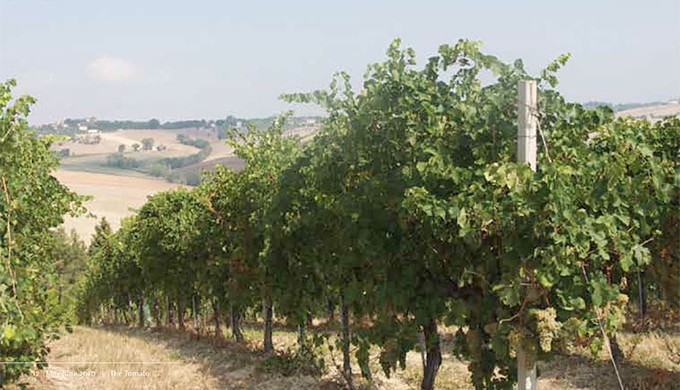
The road winds around hills that come in waves, folding in and around each other like origami. As we drive east we occasionally catch glimpses of hill-top towns, blue ocean and, of course, hillsides covered in hills and vines. We are in Le Marche, in central Italy, between Umbria and the Adriatic
Le Marche is a bit of a conundrum, known for textiles, leather, pork and an industrious people, bordered by the sybaritic allure of the Adriatic. The white rock and black and white pebbled beaches are dotted by legions of sun seekers and striped umbrellas.
The wines, once a secret known only to the marchigiani who drank them casually with the evening meal, are growing in quality and popularity. They remain a bargain, by world standards, great quality for the price.
The end of August is a busy time. The whites are picked early in the morning and the juice is in the tank by early afternoon. Then it’s a process of watching temperatures. Remember when Italian whites were heavy, oxidized and not very attractive? Controlling temperature when making white wines is one of the happier aspects of modern winemaking, keeping aromas bright and flavours fresh.
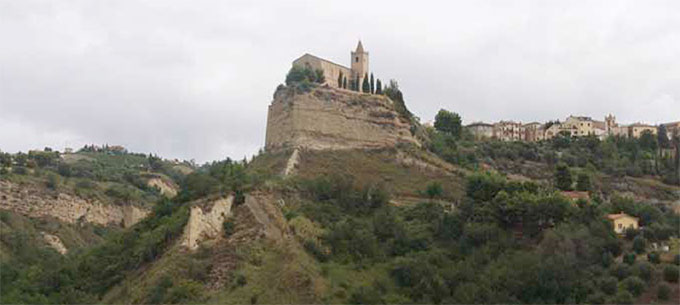
Two estates reveal what’s happening in the new Marche, a respectful mix of tradition and modernity, and an eye for value.
tenuta de angelis
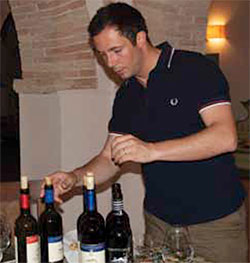
(Offi da, near Ascoli Piceno)
Produces Rosso Piceno DOC from Sangiovese and Montepulciano, Falerio DOC from Trebbiano, Prato Grande Chardonnay, Anghelos IGT from Cabernet Sauvignon and Montepulciano, and Offi da DOC Pecorino and Passerina.
Quinto Fausti and his wife Elide own Tenuta de Agnelis, near Offi da in the southern part of the Marche. The vineyards run up and down the gentle slopes with a view of the spectacular sandstone formations in the area (one outcropping holds Chiesa Santa Maria della Rocca or, St Mary’s of the Rock). The vines are bordered by olive trees—the farm produces a peppery olive oil as well.
Quinto walks the vines with a dog or a cat or two at his heels. It’s extremely hot and humid and the Montepulciano grapes have pretty much come to a standstill in their development. “We need some rain;” he says, which they get the next week, a cooling shower that gets everything back to normal a few weeks before harvest.
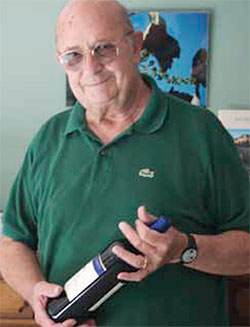
prato grande chardonnay: Think citrus, lime and tangerine followed by notes of almond flower, and stone fruit. Complex, with character, medium-bodied with a pleasing fi nish. It’s a versatile white—have with grilled monkfi sh, chicken and mango salad, or roast pork.
rosso piceno: A sassy mouthful of juicy red fruit, bright acidity and soft tannins create a terrifi c partner for casual foods, such as pizza or pasta or as an aperitif.
anghelos: First notes of dusty herbs and cherries are followed by full-bodied rich red fruit and mellow round tannins. Complex, dynamic, and harmonious.
marotti campi estate
(Morro d’Alba, north of Jesi)
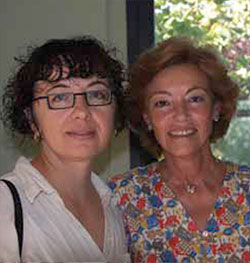
Produces four different styles of Verdicchio dei Castelli di Jesi DOC called Albiano, Luzano, Salmariano, and Onyr; two Lacrima di Morro d’Alba DOC, Rubico and Orgiolo; and Donderè, Le Marche IGT, made from Petit Verdot, Cabernet Sauvignon and Montepulciano.
Vineyards cluster around an elegant 14th century villa, home to the Marotti-Campi family for over a century. Grapes have always been a part of the mix here, but it wasn’t until Lorenzo, the son of Francesca* and Giuseppe, decided to get serious about the wines, that a modern winery was built (in an industrial area close by, as Lorenzo puts it “to not harm the landscape”).
Here grow the ancient grapes of the Marche, Lacrima di Morro d’Alba and Verdiccio del Castelli di Jesi, for decades known as the best wine for fi sh and sold by one company in a fi sh-shaped bottle. Don’t hold that against it. The Marotti-Campi wines are formidable contenders: tasty, complex, well-made.
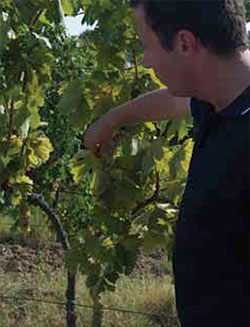
Lorenzo, serious as he is about making the best wine possible, is an irreverent and gracious host, taking time to visit other wineries of the region, and spending hours tasting through several vintages.
The wines are a revelation. The Lacrima with its heady perfume of roses, violets, and blackberry leaves is an all-out assault on the senses, in the best possible way. Tasting it with brodetto, the seafood stew of the region, gives new meaning to the phrase well-matched. The heady aromas and creamy textures of the various Verdicchio take it way beyond a simple fi sh wine and into white Burgundy territory.
They are, in a word, spectacular.
* A bonus for travelers: Francesca operates a country house called Vigna Sant’Amico, a bucolic retreat of ten apartments and a unique tower apartment with a commanding view of the countryside.